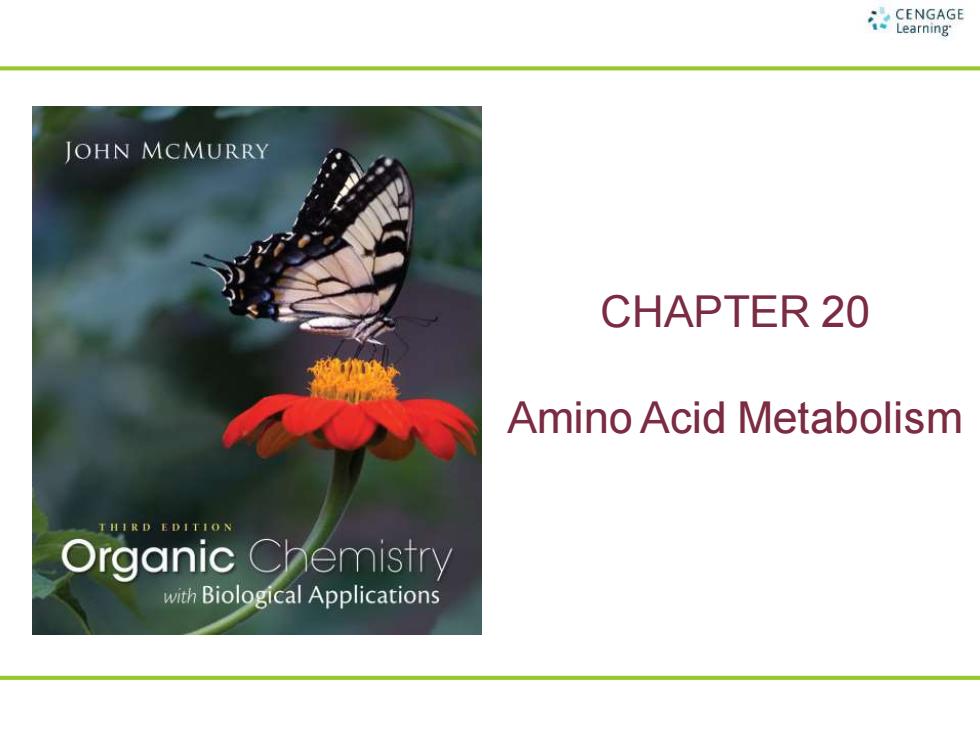
CNGNGE JOHN MCMURRY CHAPTER 20 Amino Acid Metabolism Organic Chemistry with Biological Applications
CHAPTER 20 Amino Acid Metabolism
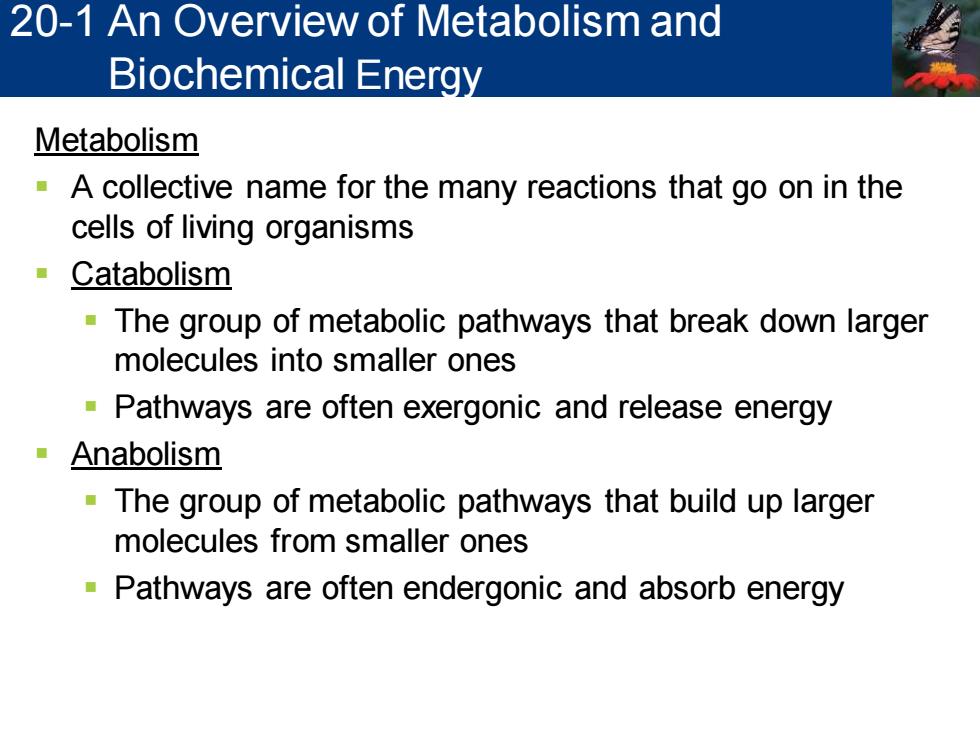
20-1 An Overview of Metabolism and Biochemical Energy Metabolism A collective name for the many reactions that go on in the cells of living organisms Catabolism The group of metabolic pathways that break down larger molecules into smaller ones Pathways are often exergonic and release energy Anabolism The group of metabolic pathways that build up larger molecules from smaller ones Pathways are often endergonic and absorb energy
Metabolism ▪ A collective name for the many reactions that go on in the cells of living organisms ▪ Catabolism ▪ The group of metabolic pathways that break down larger molecules into smaller ones ▪ Pathways are often exergonic and release energy ▪ Anabolism ▪ The group of metabolic pathways that build up larger molecules from smaller ones ▪ Pathways are often endergonic and absorb energy 20-1 An Overview of Metabolism and Biochemical Energy
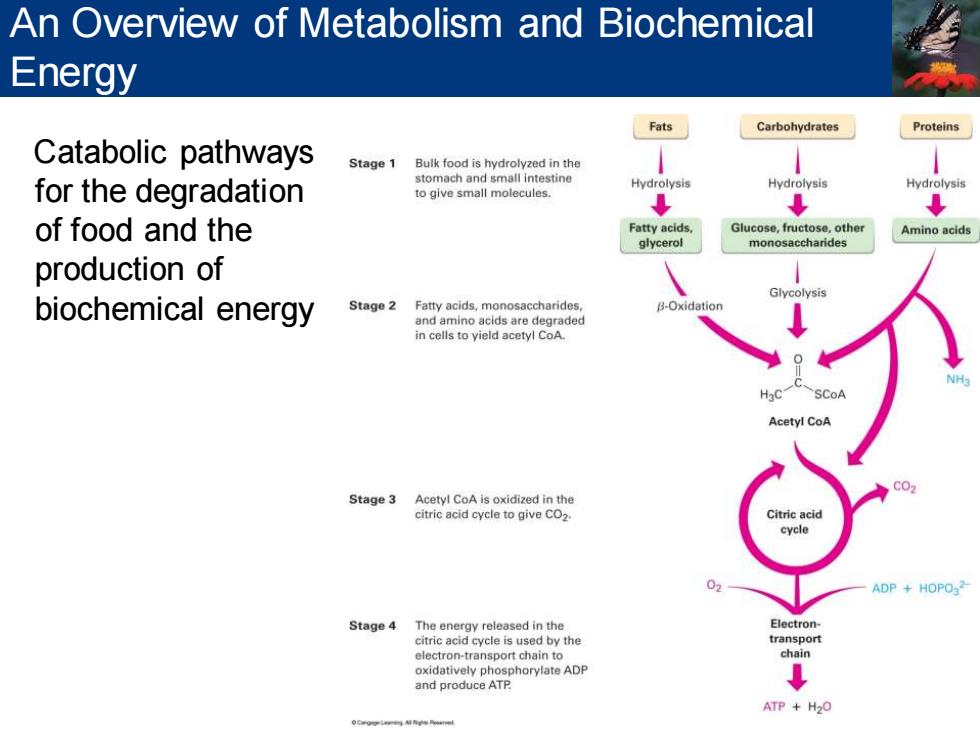
An Overview of Metabolism and Biochemical Energy Fats Carbohydrates Proteins Catabolic pathways Stage 1 Bulk food is hydrolyzed in the for the degradation stomach and small intestine Hydrolysis Hydrolysis Hydrolysis to give small molecules. of food and the Fatty acids, Glucose,fructose,other Amino acids glycerol monosaccharides production of biochemical energy Stage 2 Fatty acids,monosaccharides and amino acids are degraded in cells to yield acetyl CoA. Stage 3 Acetyl CoA is oxidized in the citric acid cycle to give CO2. Citrie acid cycle Stage 4 The energy released in the Electron citric acid cycle is used by the transport electron-transport chain to chain oxidatively phosphorylate ADP and produce ATP ATP H2O
Catabolic pathways for the degradation of food and the production of biochemical energy An Overview of Metabolism and Biochemical Energy
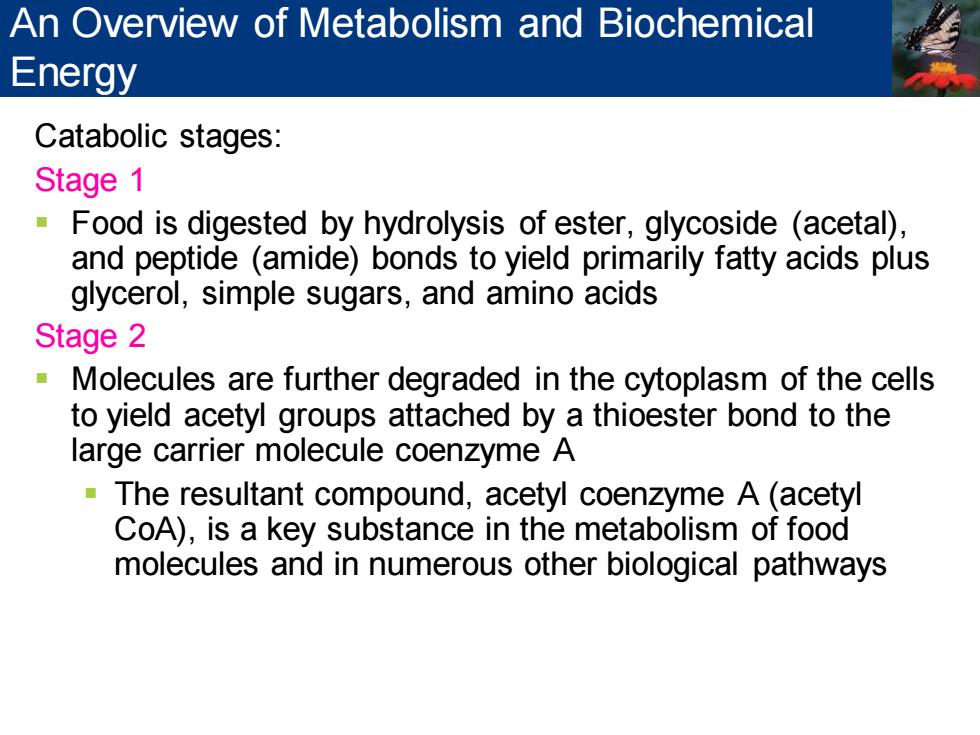
An Overview of Metabolism and Biochemical Energy Catabolic stages: Stage 1 Food is digested by hydrolysis of ester,glycoside (acetal), and peptide (amide)bonds to yield primarily fatty acids plus glycerol,simple sugars,and amino acids Stage 2 Molecules are further degraded in the cytoplasm of the cells to yield acetyl groups attached by a thioester bond to the large carrier molecule coenzyme A The resultant compound,acetyl coenzyme A (acetyl CoA),is a key substance in the metabolism of food molecules and in numerous other biological pathways
Catabolic stages: Stage 1 ▪ Food is digested by hydrolysis of ester, glycoside (acetal), and peptide (amide) bonds to yield primarily fatty acids plus glycerol, simple sugars, and amino acids Stage 2 ▪ Molecules are further degraded in the cytoplasm of the cells to yield acetyl groups attached by a thioester bond to the large carrier molecule coenzyme A ▪ The resultant compound, acetyl coenzyme A (acetyl CoA), is a key substance in the metabolism of food molecules and in numerous other biological pathways An Overview of Metabolism and Biochemical Energy
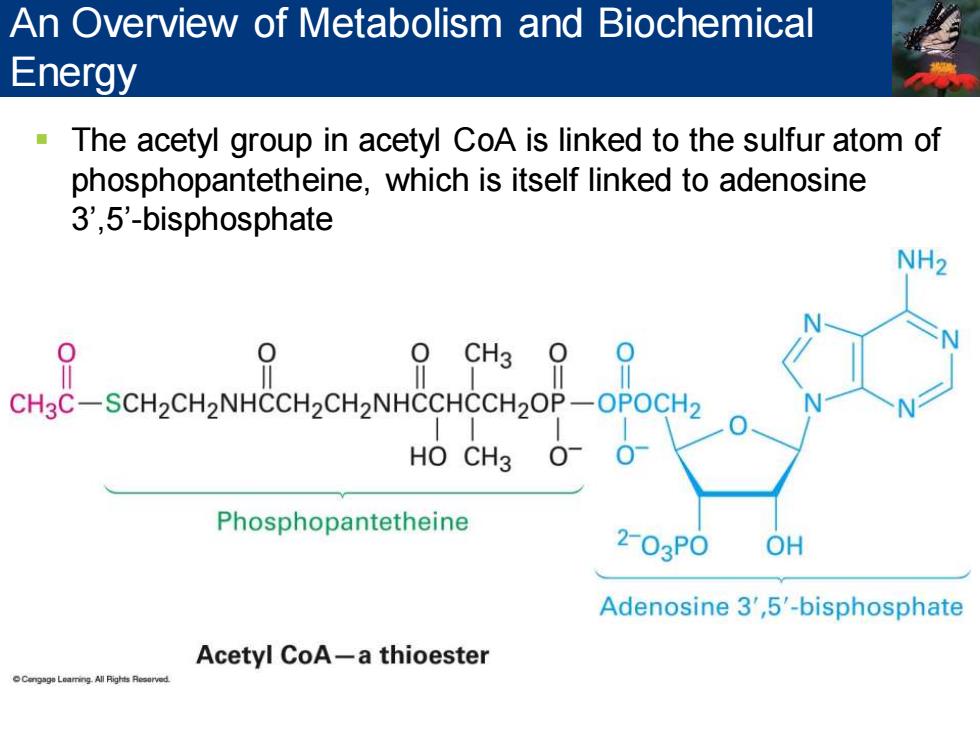
An Overview of Metabolism and Biochemical Energy -The acetyl group in acetyl CoA is linked to the sulfur atom of phosphopantetheine,which is itself linked to adenosine 3',5'-bisphosphate CH3 O CH3C-SCH2CH2NHCCH2CH2NHCCHCCH2OP-OPOCH2 HO CH3 0 0 Phosphopantetheine 203P0 OH Adenosine 3',5'-bisphosphate Acetyl CoA-a thioester
▪ The acetyl group in acetyl CoA is linked to the sulfur atom of phosphopantetheine, which is itself linked to adenosine 3’,5’-bisphosphate An Overview of Metabolism and Biochemical Energy